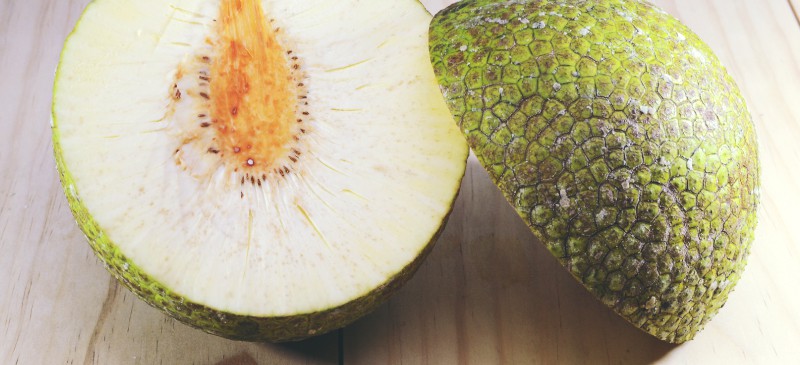This Dr. Axe content is medically reviewed or fact checked to ensure factually accurate information.
With strict editorial sourcing guidelines, we only link to academic research institutions, reputable media sites and, when research is available, medically peer-reviewed studies. Note that the numbers in parentheses (1, 2, etc.) are clickable links to these studies.
The information in our articles is NOT intended to replace a one-on-one relationship with a qualified health care professional and is not intended as medical advice.
This article is based on scientific evidence, written by experts and fact checked by our trained editorial staff. Note that the numbers in parentheses (1, 2, etc.) are clickable links to medically peer-reviewed studies.
Our team includes licensed nutritionists and dietitians, certified health education specialists, as well as certified strength and conditioning specialists, personal trainers and corrective exercise specialists. Our team aims to be not only thorough with its research, but also objective and unbiased.
The information in our articles is NOT intended to replace a one-on-one relationship with a qualified health care professional and is not intended as medical advice.
Breadfruit Benefits: Antioxidant-Rich and Immune-Boosting Powerhouse
November 16, 2023

What looks like a fruit, tastes a little like bread and has so many nutrients it’s almost hard to keep track of all of them? The answer: breadfruit.
This powerful fruit has been a staple for quite some time in the tropical areas where it commonly grows, and that’s a very good thing. Breadfruit offers tons of fiber in just one serving and more than 70 percent of the vitamin C you need each day, not to mention over a dozen other important nutrients.
The nutritive value of breadfruit can hardly be overstated considering it has gained the attention of a great deal of scientific research for its impact on cancer, heart disease and inflammation. You can even use it as an insect repellent that’s better than the leading chemical insect repellant spray.
Whether or not you live in a tropical environment where breadfruit is regularly cultivated, I highly suggest you get to know this incredible fruit. Who knows — maybe you can be a part of encouraging your local produce markets to carry this powerful vitamin C food.
What Is Breadfruit?
From the Moraceae family (which also includes jackfruit, mulberry and figs), breadfruit trees are officially classified as Artocarpus altilis, although they’re known by several other names. For example, breadfruit plants are referred to as “ulu” in Hawaii, Artocarpus communis in various types of research and “panapen” in other areas of the world.
Breadfruit fruits come from the nutrient-rich breadfruit tree, growing on branches in large quantities when they’re in season. These incredibly useful plants originated in the South Pacific (specifically New Guinea) and have made their way to the rest of Oceania as well as many other tropical regions as a low-effort, low-cost staple food.
The fruit contains a great number of essential nutrients and can be eaten both raw (under certain circumstances) and cooked with various methods, which greatly extends the fruit’s life span.
It’s considered a staple food of the people of Jamaica and many other tropical locations. In the last several decades, it’s continued gaining popularity in places such as Hawaii (where it’s generally known as “ulu”), which saw the first breadfruit cultivation in 1978.
Because of its incredible yield — one tree can reap 450 pounds of the fruit in just one growing season — various institutes and organizations have been formed to propagate breadfruit growing, especially in poorer countries in need of inexpensive nutrition, such as Haiti.
Nutrition Facts
A one-cup serving of breadfruit (about 220 grams) contains approximately:
- Calories: 227
- Total Carbohydrates: 59.6 g
- Fiber: 10.8 g
- Sugar: 24.2 g
- Total Fat: 0.5 g
- Saturated Fat: 0.1 g
- Polyunsaturated Fat: 0.1 g
- Monounsaturated Fat: 0.1 g
- Trans Fat: 0 g
- Protein: 2.4 g
- Sodium: 4.4 mg (0.2% DV*)
- Vitamin C: 63.8 mg (71% DV)
- Potassium: 1,080 mg (23% DV)
- Copper: 0.2 mg (22% DV)
- Pantothenic Acid: 1 mg (20% DV)
- Thiamine: 0.2 mg (17% DV)
- Magnesium: 55 mg (13% DV)
- Niacin: 2 mg (13% DV)
- Vitamin B6: 0.2 mg (12% DV)
- Folate: 30.8 mcg (8% DV)
- Riboflavin: 0.1 mg (8% DV)
- Iron: 1.2 mg (7% DV)
- Phosphorus: 66 mg (5% DV)
- Manganese: 0.1 mg (4% DV)
*Daily Value: Percentages are based on a diet of 2,000 calories a day.
Health Benefits
1. Rich in Amino Acids to Help Your Body Store Nutrients
Do you know what the building blocks of your body are? They’re proteins known as amino acids, and they create the structure of your body’s cells, work to transport nutrients and support the functioning of all major bodily systems.
According to a study from the University of British Columbia, breadfruit provides “a full spectrum of the essential amino acids.” Further research published in 2023 relays that it “is particularly high in leucine, isoleucine, phenylalanine, and valine making it a good source of essential amino acids, especially in countries battling malnutrition.”
2. Helps Prevent and Reverse Oxidative Stress
Another nutrient group important to disease prevention is antioxidants. Found in a huge variety of food sources, antioxidants prevent and reverse oxidative stress, the damage that free radicals cause to body functions.
Free radicals can be introduced into the body through sun overexposure, chemicals found in your environment and various other sources, but when you eat a diet full of high-antioxidant foods, you can slow the age-related breakdown of your cells as well as reduce your risk of cancer, heart disease and stroke (among other diseases).
All edible parts of the fruit of the breadfruit tree contain an impressive antioxidant load and offer the potential for many positive bioactive processes due to their high presence of phenols.
One animal study in the spring of 2016 focused specifically on the antioxidant activity of breadfruit as it relates to the toxicity of cadmium, a common environmental toxin and endocrine disruptor. This particular study investigated the effect of cadmium on alterations in sperm count and activity and found that the tested methanol extract of breadfruit caused significant improvement in sperm count, motility (movement) and hormone levels.
An important antioxidant found in breadfruit is vitamin C. Individuals who eat diets rich in fruits and vegetables containing a lot of vitamin C have a decreased risk of heart disease, stroke and cancer, as well as an extended life span compared to those who do not have a high dietary intake of vitamin C.
3. Can Keep Your Heart Strong
Due in part to its antioxidant content, in addition to other factors, breadfruit is also great for your heart. It’s been found to contain phytochemicals that protect the heart against atherosclerosis, a heart disease characterized by slowly building pockets of white blood cells in artery walls causing them to thicken. Eventually, atherosclerosis can lead to myocardial ischemia, a blockage of blood supply to the heart that can lead to heart attack.
In 2006, breadfruit was termed as a good prospect to use in medicinal protection against this very common disease.
Another way it’s beneficial to your heart is by its ability to combat high cholesterol. In one rat model, a methanol extract from breadfruit alleviated all serum (blood) levels and symptoms associated with high cholesterol. This shows its potential as a cholesterol-lowering food.
Breadfruit is also incredibly high in fiber. A high-fiber diet is associated strongly with a reduced risk of high blood pressure, hypertension and other heart disease risk factors, along with metabolic syndrome.
Because breadfruit is high in potassium, it also offers protection from low potassium, a leading cause of congestive heart failure. Deficiencies in potassium and magnesium (which is also found in relatively high quantities in breadfruit) complicate and exacerbate heart problems, so anyone at risk for heart disease should take great care to supplement these essential nutrients into their diets.

4. Boosts the Body’s Immunity
Eating fruit from the breadfruit tree can also help your immune system function well. For example, because inflammation is at the root of most diseases, the presence of anti-inflammatory bioflavonoids in breadfruit is especially important to reducing your risk of disease.
These peculiar fruits also contain a fairly large quantity of thiamine, aka vitamin B1. Thiamine is part of what maintains muscle tone along the walls of the digestive tract, where the majority of the immune system is located. It also assists in the secretion of hydrochloric acid, helping your body fully digest food and absorb the highest amount of nutrients possible.
Together, these features make thiamine a valuable nutrient in maintaining a healthy immune system.
5. May Help Protect Against Certain Cancers
Because breadfruit has some incredible anti-inflammatory and antioxidant properties, it’s been researched as a potential cancer-fighting food. In a mice model, a Taiwan study found it to have significant potential in the fight against skin cancer. An extract from this fruit, applied directly to the skin, decreased the number, size and malignancy of skin tumors.
This evidence is preliminary but has the potential to be groundbreaking.
Another cancer that may be fought by the powerful nutrients in breadfruit is pancreatic cancer. Pancreatic cancer operates differently than many other types of cancer because it’s not as susceptible to “nutrient starvation” as other cancers often are. This means that the cancer drugs that are commonly prescribed to starve cancer cells of nutrients are even less effective than usual against cancer of the pancreas.
Therefore, when studying possible treatments for pancreatic cancer, scientists must focus on things that can kill these cancer cells and prevent them from pulling nutrients from nearby vessels and cells. In 2014, a pilot study investigating the impact of an extract from the leaves of the breadfruit tree found that the chemical compound had 100 percent “preferential cytoxicity” against human pancreatic cancer cells known as PANC-1 under nutrient-deprived conditions.
This means that the extract successfully killed 100 percent of the pancreatic cancer cells when subjected to a nutrient-deprived environment (which normally would have little to no effect on these cells).
Another study in Asia published in the American Journal of Chinese Medicine studied the effect of an extract from the breadfruit plant on liver cancer cells. The findings were also fascinating, as researchers discovered that the extract did not cause traditional apoptosis (programmed cell death) that’s often seen in anticancer nutrients and pharmaceuticals.
Instead, when exposed to the breadfruit extract, the liver cancer cells underwent autophagic death. This alternative method of cell death occurs naturally in the body as it processes proteins and breaks down damaged cells and is a more effective method of stopping cancer in certain cases.
6. Helps Manage Join and Muscle Pain
Research published in 2014 notes that breadfruit is a medicinal food that it “is effective against rheumatic and muscular pain.” This is believed to be true due to its phenolic compounds, including flavones.
7. Holds Antibacterial Properties
A 2020 study conducted in the Comoros Islands determined that breadfruit “presented antimicrobial and antioxidant properties.” It’s also been shown to help combat Streptococcus mutans, Pseudomonas aeruginosa and other bacteria.
8. Good for Diabetics
As one study put it: “Breadfruit has a low glycemic index (GI) and has been touted as a traditional, diabetic-friendly fruit.” In fact, breadfruit flour is considered a healthy option, particularly for diabetics, and can help provide food security for certain individuals.
It’s also been studied for its ability to “mitigate diabetes” in Oceania and displays the potential to do that just that.
How to Use
Because it’s sensitive to physical disturbances, such as damage from being dropped, breadfruit is not often exported out of tropical climates for sale in more temperate areas. However, it’s not impossible to find it in many major metropolitan areas.
If you’re interested in trying this incredible, nutritious fruit but don’t live in the tropics, I suggest calling your local organic markets and requesting it. It’s certainly power-packed enough to be worth it.
In the tropical areas where it grows, breadfruit can be picked directly from the branches of the breadfruit tree. It’s relatively inexpensive to purchase breadfruit seeds to plant trees, if you’re able to do so.
Breadfruit grows in various colors and generally has a round or globular shape, covered in bumps. In areas where it’s cultivated regularly, you’ll often have the choice between seeded and seedless varieties.
For the purposes of cooking or stewing, mature but unripe fruits are preferred. As breadfruit continues to ripen after picked, you can choose to eat it at its ripest, which is when it gives to thumb pressure. This fruit should never be refrigerated because it can undergo chilling injury at temperatures below 12 degrees Fahrenheit.
Many fans of breadfruit know that it can be used in a huge variety of ways. You can eat it ripe, which may give a taste similar to custard apples. It may also be stewed, fried, baked, broiled or powdered.
Generally, you should peel the outer skin, then split the fruit into quarter slices before discarding the central core, after which you can cut it into the appropriate size for whatever dish you plant to prepare. When baked, the taste is more closely related to freshly baked bread (which is how it earned its name).
You can also safely consume the nuts of breadfruit plants. They’re often roasted or boiled much like nuts or lentils.
Breadfruit has incredible potential in many areas, including the creation of a much better-tasting gluten-free flour than many current popular varieties. Interestingly, breadfruit is also an extremely effective insect repellent, according to the United States Department of Agriculture. The USDA actually found it to be “significantly more effective” at repelling insects than DEET, the leading chemical insect repellent.
Another fascinating feature of the breadfruit tree is the medicinal value it offers from its bark and leaves. Leaf extracts may be able to effectively treat hypertension without the side effects associated with most dangerous blood pressure medications.
The wood of the breadfruit tree is also incredibly rich in antioxidants, specifically those that can support the health of your skin. On a cosmetic level, the bark of the tree may be used to create a safe anti-wrinkle treatment because of the way it protects against typical damage and degradation of the skin.
Going further, this same extract has, in preliminary tests, shown to be useful in preventing the mutation of melanin into melanoma cells, suggesting it may be an important part of treating or preventing skin cancer in humans.
Risks, Side Effects and Allergies
It’s unusual to experience an allergic reaction to breadfruit, but it’s not impossible. A typical allergic reaction includes hives and/or inflammation and swelling of the lips, tongue and mouth. If you experience this reaction after eating breadfruit, discontinue eating it immediately, and see your physician.
In addition, you should only eat unripe green-stage breadfruit after first cooking it. Eating unripe, raw breadfruit has the potential to cause a choking hazard.
Final Thoughts
- Breadfruit is known by various names throughout the world, including panapen, ulu, Artocarpus altilis and Artocarpus communis.
- This fruit is only able to grow in tropical climates near the equator.
- Because 80 percent of the world’s most impoverished people live near the equator, this incredible nutrition-packed food has remarkable potential in helping solve some hunger issues in these areas.
- Research has found it to have incredible effects in fighting cancer, preventing heart disease and boosting the immune system.
- Breadfruit contains a great number of antioxidants and exhibits anti-inflammatory activity within the body, both of which also help with the prevention of disease.
- It’s not only the fruit of the tree that contains medicinal properties, but also the leaves and bark, which contain powerful antioxidants and may also help protect against heart disease.
- This fruit can be eaten raw and ripe or cooked in a variety of methods. It’s a great “base” for many types of recipes. Just remember not to refrigerate it.














